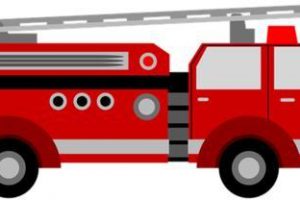Introduction
Home safety is a paramount concern for everyone. In this comprehensive guide, we will delve into one of the most critical aspects of home safety: fire safety. Fires can occur unexpectedly and have devastating consequences if not properly managed. In this article, we will discuss the importance of home fire extinguishers and provide a detailed guide on how to use them effectively. By the end of this article, you will have a thorough understanding of fire safety and the role fire extinguishers play in safeguarding your home.
Understanding the Fire Triangle
Before we dive into the specifics of home fire extinguishers, it’s essential to comprehend the basics of fire. Fires require three primary components to burn: fuel, oxygen, and heat. This concept is known as the fire triangle. To extinguish a fire, you must remove one or more of these elements. Fire extinguishers are designed to do just that by using various techniques, such as cooling, smothering, or suppressing the fire.
The Importance of Fire Safety
Fire safety should never be underestimated. According to the National Fire Protection Association (NFPA), in the United States alone, there were approximately 1.3 million fires reported in 2020. These fires resulted in over 3,700 civilian deaths and caused billions of dollars in property damage. Having the knowledge and tools to deal with a fire emergency can make a significant difference in protecting lives and property.
Types of Fire Extinguishers
Fire extinguishers come in various types, each designed to tackle specific classes of fires. It’s crucial to understand these types to choose the right extinguisher for your home. The most common types of fire extinguishers are:
- Class A (Ordinary Combustibles): These extinguishers are suitable for fires involving materials like wood, paper, fabric, and trash.
- Class B (Flammable Liquids): Class B extinguishers are designed for fires fueled by flammable liquids such as gasoline, oil, and grease.
- Class C (Electrical Fires): These extinguishers are safe for use on fires involving live electrical equipment.
- Class D (Metal Fires): Class D extinguishers are used for fires involving combustible metals, such as magnesium and titanium.
- Class K (Kitchen Fires): Specifically designed for kitchen fires, they are effective in extinguishing fires caused by cooking oils and fats.
Selecting the Right Fire Extinguisher
To ensure your home is adequately protected, it’s vital to choose the right fire extinguisher. Consider the specific fire risks in different areas of your home. For example, a kitchen may require a Class K extinguisher, while a garage may benefit from a Class B or Class D extinguisher.
Additionally, make sure your chosen extinguisher carries the Underwriters Laboratories (UL) label, indicating it meets safety and performance standards. Check the extinguisher’s weight and ensure that it is manageable for everyone in your household.
Placement and Maintenance
Having the right fire extinguisher is only half the battle. Proper placement and maintenance are equally crucial. Install extinguishers in easily accessible locations, with clear visibility. Common areas to place fire extinguishers include the kitchen, garage, and near bedrooms.
Regularly inspect your extinguishers, checking for visible damage, proper pressure, and expiration dates. Remember that fire extinguishers have a limited lifespan and need to be replaced or recharged as necessary.
Using a Fire Extinguisher
Knowing how to use a fire extinguisher effectively can mean the difference between containing a small fire and a disaster. Follow these steps:
- Pull: Pull the pin to unlock the extinguisher.
- Aim: Aim the nozzle at the base of the fire.
- Squeeze: Squeeze the handle to discharge the extinguishing agent.
- Sweep: Sweep the nozzle from side to side, covering the base of the fire until it’s completely extinguished.
- Keep an Exit: Always have an escape route behind you in case the fire can’t be controlled.
Types of Fire Extinguishing Agents
Different types of extinguishers use various extinguishing agents. The most common types include:
- Water: Suitable for Class A fires but should not be used on electrical or flammable liquid fires.
- Dry Chemical: Effective against Class A, B, and C fires, making them versatile for home use.
- Carbon Dioxide (CO2): Ideal for electrical fires (Class C) and flammable liquid fires (Class B).
- Foam: Useful for Class A and B fires, often found in kitchen extinguishers.
- Halon: Effective for Class B and C fires but is no longer manufactured due to environmental concerns.
When Not to Use a Fire Extinguisher
Fire extinguishers are valuable tools, but there are situations where they should not be used. Do not attempt to extinguish a fire if:
- The fire is too large or spreading rapidly.
- You don’t know how to use the extinguisher.
- Your escape route is blocked.
- The extinguisher is not suitable for the type of fire.
In such cases, your priority should be to evacuate and call the fire department immediately.
Conclusion
Home safety, particularly fire safety, is an essential aspect of responsible homeownership. Fire extinguishers are indispensable tools that can help you mitigate fire-related risks in your home. By understanding the different types of extinguishers, selecting the right one, placing it strategically, and knowing how to use it effectively, you can protect your loved ones and your property from the devastating effects of fires. Take the time to educate yourself and your family about fire safety and invest in the right fire extinguishers to ensure peace of mind and a safer living environment.











Add Comment